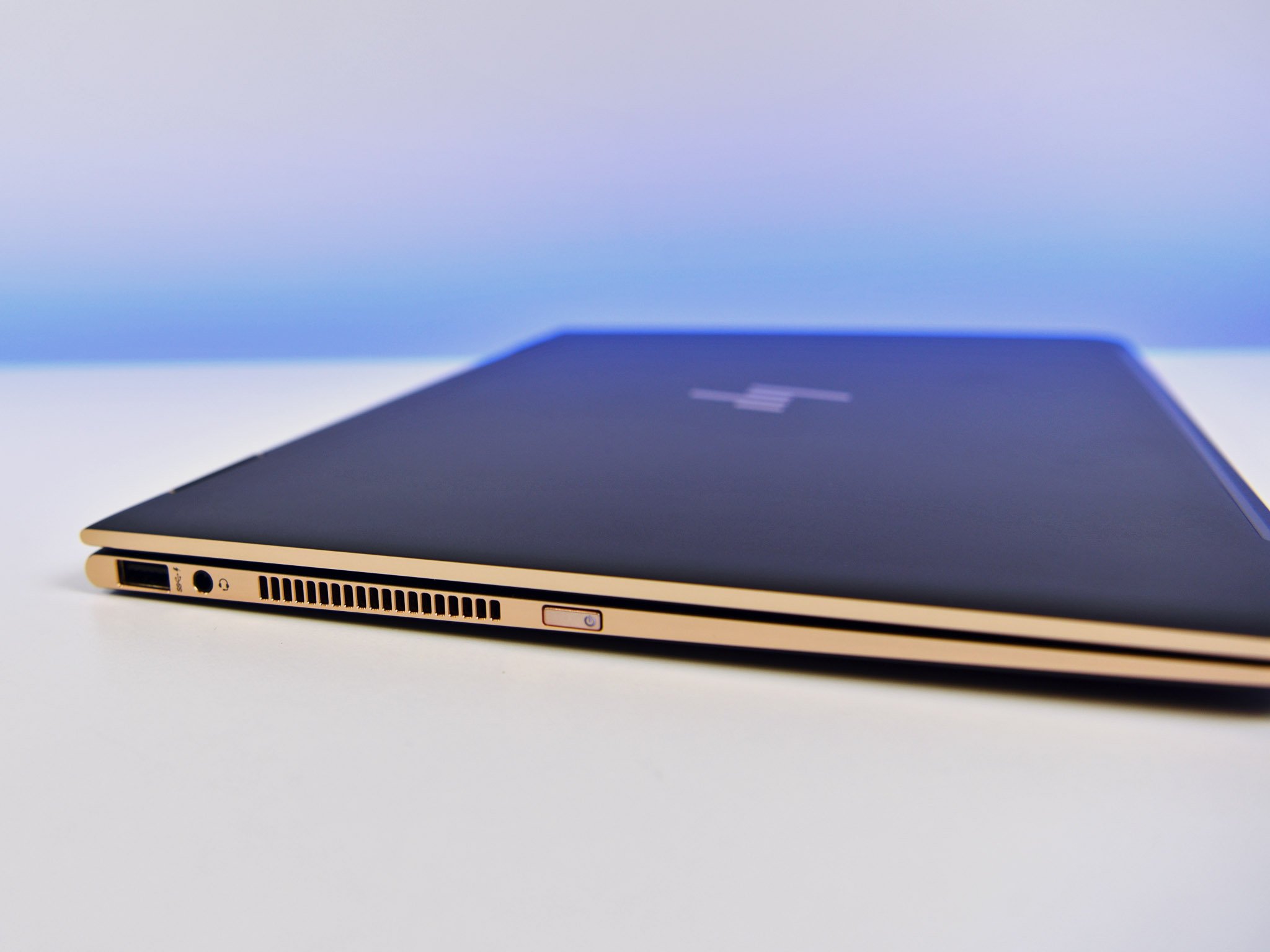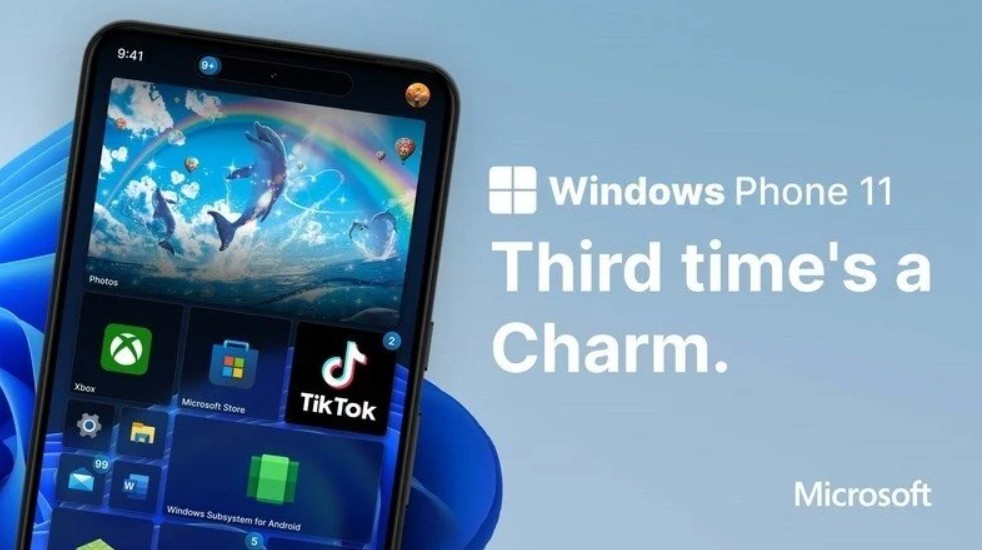One big downside of the late-2016 HP Spectre x360 was the lack of an active pen for the 13-inch version. (One was included with the 15-inch variant). It was an odd oversight because HP previously offered a pen with the older model. Without an active digitizer, the Spectre x360 13 is a fantastic 2-in-1, but it is no real Surface competitor.

That all changed with a new option at the high-end. HP's new offering, priced at $1,199 and $1,599, adds a pen, a new "dark ash" color scheme, and a very impressive full 4K (3840 x 2160) display.
Did HP overshoot with this model? Or did it perfect an already-excellent machine? Read on to find out.
About this review
The Spectre x360 used in this report is a loaner unit supplied by HP. It features a Core i7 CPU, 16GB of RAM, and 512GB of storage. The retail price is $1,599.
Spectre x360 13 4K Hardware – What's new and different?
HP offers two versions of the new Spectre x360 with 4K display and pen. There is the standard silver version with 8GB of RAM and 256GB of storage for just $1,199, and the top of the line model with 16GB of RAM, 512GB of storage, and the dark ash color for $1,599.

Both feature an Intel "Kaby Lake" Core i7-7500U processor with Intel HD 620 graphics. The new active pen is included in the box.
HP Spectre x360 specifications
All the latest news, reviews, and guides for Windows and Xbox diehards.
| Category | Specs |
|---|---|
| OS | Windows 10 Home |
| Processor | 7th-Gen Intel Core i7-7500U Base frequency at 2.7GHz; Turbo to 3.5GHz |
| Display | 13.3-inch diagonal 4K (3840 x 2160) IPS UWVA WLED-backlit multitouch-enabled Edge-to-edge glass |
| Active pen | Yes (ELAN), included |
| Memory | 8GB or 16 GB LPDDR3 SDRAM |
| Solid-state drive (SSD) | 256 or 512GB PCIe NVMe M.2 SSD |
| Graphics | Intel HD Graphics 620 |
| Audio | Bang & Olufsen with quad speakers |
| Webcam | Front-facing HP TrueVision FHD IR Webcam Windows Hello capable |
| Weight | 2.9 lb (1.32kg) |
| Wireless | 2x2 802.11ac WLAN and Bluetooth |
| Ports | two USB 3.1 Type-C Thunderbolt ports one USB 3.1 Type-A one Headphone/microphone combo |
| Battery | 57WHr |
| Power | Type-C Fast Charge |
| Color | Natural silver or dark ash |
The big differences with the 13-AC033DX model come down to three changes:
- 13.3-inch 4K display (versus Full HD).
- Dark ash color (versus natural silver).
- Active pen.
While I was OK with the natural silver in the past, I did ding the Spectre for its matching silver keys, which did not offer a lot of contrast when backlit. That problem is solved with the dark ash color and its near-black keys. I adore the gold trim, as well, and if given a choice would opt for dark ash over silver. HP made a very handsome laptop here.
Other than the above, the HP Spectre x360 is the same as the version I reviewed late last year. Because of that reason, I'll mostly focus on the display and pen for this review. For a deeper dive, you can check out my full review for more detail.
Is 4K in a 13-incher too much?
The 4K display panel type is the same as found in HP's 15-inch version of the Spectre x360. It's non-PenTile, which is a victory for many enthusiasts who do not care for the checkered pixels and who want "real" 4K resolution.

As noted in my Spectre x360 15-inch review, HP's display type is more natural and not as intense as IGZO, making it a bit easier to stare at for long periods.
But is 4K too much for such a small screen?
Usually, 13.3-inch Ultrabooks max at QHD (3200 x 1800, 276 pixels per inch), and it is rare to see 4K (3840 x 2160, 331 pixels per inch) at this size. In fact, this is the first 13-inch laptop I have used with a 4K display.
But it's not too much at all. I was pleasantly surprised to see that Windows 10 at 300 percent scaling handled apps and video just fine.
Typically, I prefer 15-inch laptops at Full HD because I'm spending more time behind large displays all day. However, I must confess that 4K at 13-inches works very well, letting me read and write without any eye strain.
I still think Full HD is a viable option for many due to its price point and battery longevity (more on that below), but after spending a few days at 4K, I'm sold.
Screen brightness is good but not exceptional. It gets plenty bright for indoor usage, but with the glossy panel, it will struggle outdoors.
The color and contrast of this display is 99 percent sRGB and 78 percent of AdobeRGB. It's tuned to be a little cooler at 7,500k, but out of the box, this panel does not need calibration.
Overall, I'm very impressed with the 4K screen. Everything looks fantastic, calibration is spot on, and brightness is satisfactory. I'd easily rank this Spectre's display near the top of my list.
An active pen for Windows Ink
HP noted that there were a few reasons for the omission of an active pen with the late-2016 Spectre x360. Part of it was the screen technology it wanted to use, which includes razor-thin side bezels, and it was just not ready or available for pen support. HP also said it received feedback from consumers who desired a pen option, and Microsoft's Creators Update due in April will bring more support for digital inking.

The pen and display technology are ELAN with Microsoft Pen Certification. You can use a Surface Pen with it, but the buttons won't be functional.
It's also the same HP Active Pen that comes with the 15-inch Spectre, complete with dual buttons on the bottom but no faux eraser button on top. That's a shame becasue such a button lets you quick-launch applications on the Surface, but not here.
Still, I'm a big fan of HP's Active Pens. HP borrows from the Surface Pen in design, weight and size, but that's a good thing here. It works so well, especially with the Creators Update, that I'm slowly working Windows Ink into my daily routine.
Unfortunately, there is no pen loop or way to anchor it to the Spectre x360, meaning you must throw into a bag or pocket. I'm not sure what HP could do here besides include a sticker loop (which the company did with the EliteBook x360). The Spectre is too thin to put the pen into the body, and to make the pen thinner would just be wrong for usage.
HP Spectre x360 15 review: The best gets bigger
Using a pen on a 13-inch Spectre is a lot easier and more reasonable than the 15-inch version, as well. Being under 3 lbs makes the smaller version just simpler to wield. You're more likely to use the pen with this model than its bigger brother, and it just makes more sense here.
Battery life takes a hit (and gets hot)
It should be unsurprising that the Spectre x360 13t with a 4K display is going to get less battery life. The original version with Full HD pushed eight maybe nine hours, but at 4K you will lose about 30 percent of your battery.
In real-world usage, I experienced around six to seven hours of battery life when set to 40 percent brightness. Much of that depends on whether you are taxing the Intel HD GPU and what screen brightness you use.
That may seem disappointing, but the 4K Spectre still packs the same 57Whr battery as the Full HD version. That means it is still a 2.9 lb (1.32kg) laptop that now pushes many more pixels at 4K.
Luckily, HP uses Fast Charge with the included Type-C AC adapter, making quick power refreshes a breeze.
I did notice a little more heat, and the fans kicked in more often, likely due to the extra processing power needed for the Intel HD chip.
While more battery is always better, the 4K Spectre brings a good balance considering what it is: a Core i7 2-in-1 with pen and a 4K display. There are not many laptops on the market with that feature set that weigh so little – and that look this beautiful. The battery tale is the same story with Dell and its XPS 15 line, which also offers a Full HD or 4K panel.
High-resolution display, or superb battery life? You can't have both in 2017.
Spectre x360 is your alternative to Surface Book
Despite getting less battery life, which is not at all surprising, I adore the 4K Spectre x360. As noted in my original review, you are getting an outstanding industrial design with a CNC-machined metal chassis, one of the best keyboards on the market, Windows Hello IR camera, and a device that can be a tablet, laptop, or presentation laptop.

The 4K display and pen is a winning combo for those who enjoy inking in Windows 10. Speaking of, the Creators Update runs flawless, which bodes well for later in April when the software is properly released. While I was skeptical of such a high-resolution display on a 13-inch laptop, after using it for a few days I'm finding it hard to give up. And I probably won't.
Toss in the dark ash color scheme with a $1,599 price, and you have your Microsoft Surface Book alternative. The closest model Microsoft has with this Spectre's feature set is priced at $2,699, though it has a slightly beefier GPU.
That contrast in price is starker with the lower-tier Spectre x360 at just $1,199. The cheapest Surface Book has an older and slower Core i5 with just 128GB of storage but still comes in at $300 more, at $1,499.
The cost comparison and value is evident. I think for $1,199 the Spectre x360 with 4K and pen is a steal. You are getting the best of HP and Windows 10 in a device that other companies would charge $2,000 or more for.


Now, the only thing I need HP to do with the Spectre line is ditch the Synaptics trackpad, which while good still pales in comparison to Precision trackpads. Otherwise, the Spectre x360 with 4K is (still) the best 13-inch Ultrabook you can buy right now.
What about speakers, typing, trackpad, benchmarks, and more? Read my full review of the Spectre x360 for all of that.
Pros:
- Amazing design.
- Excellent 4K display.
- Active pen.
- Best keyboard.
- Windows Hello.
- USB Fast Charge.
- Fantastic value.
Cons:
- No Precision Touchpad.
- No SD card slot or HDMI out.
- Battery life takes a hit.
Wallpaper images utilized in this review are under license from Shutterstock and mashe. You can purchases images from that collection here.

Daniel Rubino is the Editor-in-chief of Windows Central. He is also the head reviewer, podcast co-host, and analyst. He has been covering Microsoft since 2007 when this site was called WMExperts (and later Windows Phone Central). His interests include Windows, laptops, next-gen computing, and wearable tech. He has reviewed laptops for over 10 years and is particularly fond of 2-in-1 convertibles, Arm64 processors, new form factors, and thin-and-light PCs. Before all this tech stuff, he worked on a Ph.D. in linguistics, performed polysomnographs in NYC, and was a motion-picture operator for 17 years.





